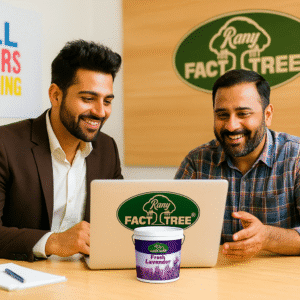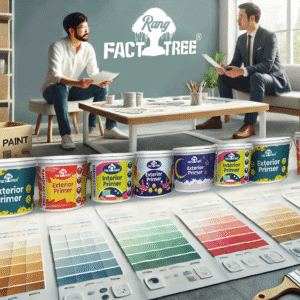How to Build Your Own Paint Brand Using White Label Manufacturing
In today’s competitive market, launching your own paint brand can be a lucrative business opportunity—especially with the rise of home improvement trends, smart cities, and real estate growth. But manufacturing paint from scratch involves significant investment in R&D, machinery, compliance, and raw materials. That’s where white label manufacturing comes in.
White label (or toll manufacturing) allows entrepreneurs to start their own paint brand without setting up a factory. You work with an established manufacturer who produces paint under your label, helping you focus on branding, marketing, and sales. Here’s a step-by-step guide on how to build your own paint brand using white label manufacturing.
Step 1: Understand the White Label Model
White label manufacturing is a business arrangement where a company produces products (in this case, paints) that other businesses rebrand and sell as their own.
You get ready-to-sell paint products—such as emulsions, distempers, primers, or texture paints—without investing in manufacturing infrastructure. You can choose formulations, colors, packaging, and labels to match your brand vision.
Benefits include:
Low upfront investment
Faster time-to-market
Proven quality and formulation
Focus on branding and distribution
Step 2: Define Your Paint Brand Identity
Before approaching a white label partner, define your own paint brand clearly:
Target Audience: Will you focus on home users, commercial spaces, or contractors?
USP (Unique Selling Proposition): Eco-friendly? Budget-friendly? Premium finish?
Product Range: Emulsions, waterproofing solutions, texture paints, metal paints, etc.
Brand Name and Logo: Choose a name that’s easy to remember, and reflects your identity.
Color Theme and Packaging Style: This helps build consistency across your brand touchpoints.
A clear brand strategy helps your manufacturing partner customize products to fit your market needs.
Step 3: Find a Reliable White Label Paint Manufacturer
The success of your paint brand depends on the quality and reliability of your white label manufacturer.
What to look for:
Manufacturing experience and certifications (ISO, BIS)
Range of paint formulations
R&D support for custom colors or properties
Compliance with Indian regulations (e.g., VOC limits)
Packaging customization options
Minimum Order Quantity (MOQ)
Tip: Check industry directories, B2B platforms, and attend paint expos to find reputable manufacturers.
Step 4: Customize Your Paint Products
Once you partner with a manufacturer, you can customize the product line for your brand:
Choose Formulations: Depending on your market, select from acrylic emulsions, weatherproof paints, washable distempers, etc.
Color Range: Create your own shade card or use pre-existing shades.
Finish & Performance: Glossy, matte, satin, or high-performance options like anti-fungal or dust-resistant paints.
Packaging Design: Customize buckets, tins, and labels with your branding.
Most manufacturers offer branding support including packaging, batch printing, and safety labels.
Step 5: Set Up Your Distribution and Sales Channels
Your paint brand needs strong distribution to succeed. Start by identifying your potential customers and how to reach them.
Options include:
Paint retailers and hardware stores
Contractors and interior designers
Direct-to-consumer (D2C) through your website
Online marketplaces like Amazon or Flipkart
Local dealerships or franchise model
You can also offer dealer margins, bulk pricing, and marketing kits to attract sellers.
Step 6: Promote Your Brand
Even the best product needs marketing. Use a combination of offline and digital strategies to promote your own paint brand:
Website: Showcase your products, features, and shade cards.
Social Media Marketing: Instagram, YouTube, and Facebook for visual storytelling.
Local Advertising: In-store posters, banners, and wall paintings.
Content Marketing: Blogs on topics like “how to choose paint” or “budget wall painting ideas.”
Influencer Collaborations: Work with home décor influencers to reach targeted audiences.
Step 7: Maintain Quality and Customer Support
To build a trustworthy paint brand, ensure consistent product quality and responsive support. Regular feedback from customers and dealers can help improve product offerings and service.
Monitor:
Customer reviews
Dealer feedback
Repeat orders
Complaint resolution turnaround time
Building long-term brand value depends on reliability, not just marketing.
Final Thoughts
Starting your own paint brand through white label manufacturing is a smart, low-risk way to enter the growing paint industry in India. You get high-quality products without the operational headaches of a factory, and can focus on building a strong market presence.
With the right branding, reliable partner, and focused marketing, your paint brand can stand shoulder-to-shoulder with well-known names. So if you dream of seeing your own logo on paint buckets across India—white label manufacturing is your fastest path to get there.
📞 Contact Rang Facttree Today
Call us at 1800 309 6799 or visit www.rangfacttree.com / www.mithilapaints.com
Let us handle the factory—while you build your business





